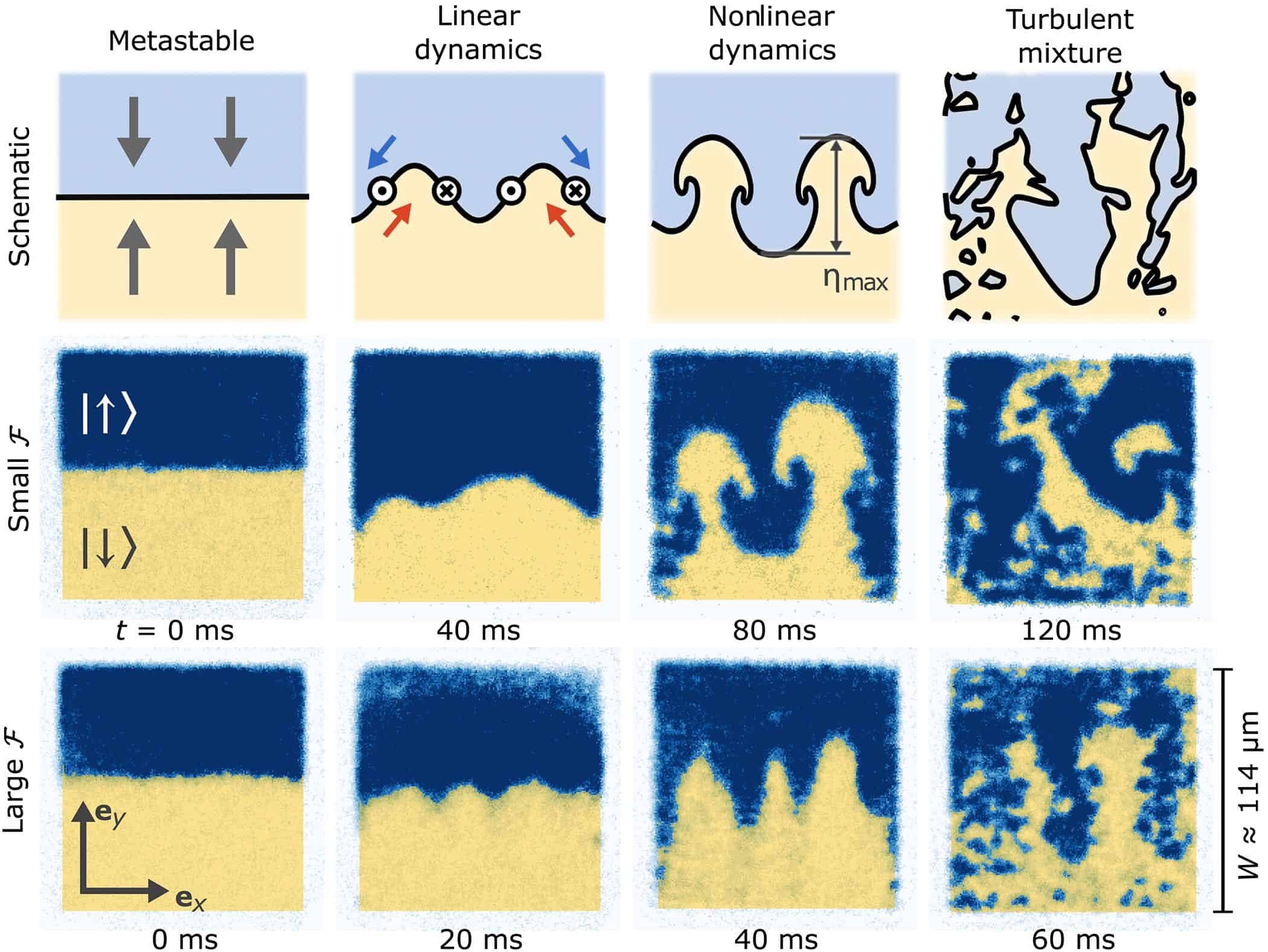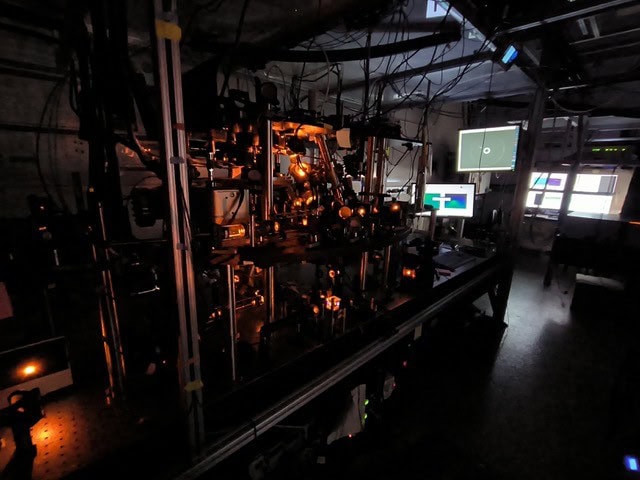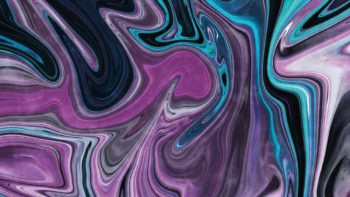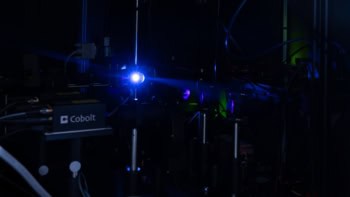
Researchers in the US have replicated a well-known fluid-dynamics process called the Rayleigh–Taylor instability on a quantum scale for the first time. The work opens the hydrodynamics of quantum gases to further exploration and could even create a new platform for understanding gravitational dynamics in the early universe.
If you’ve ever tried mixing oil with water, you’ll understand how the Rayleigh–Taylor instability (RTI) can develop. Due to their different molecular structures and the nature of the forces between their molecules, the two fluids do not mix well. After some time, they separate, forming a clear interface between oil and water.
Scientists have studied the dynamics of this interface upon perturbations – disturbances of the system – for nearly 150 years, with major work being done by the British physicists Lord Rayleigh in 1883 and Geoffrey Taylor in 1950. Under specific conditions related to the buoyant force of the fluid and the perturbative force causing the disturbance, they showed that this interface becomes unstable. Rather than simply oscillating, the system deviates from its initial state, leading to the formation of interesting geometric patterns such as mushroom clouds and filaments of gas in the Crab Nebula.
An interface of spins
To show that such dynamics occur not only in macroscopic structures, but also at a quantum scale, scientists at the University of Maryland and the Joint Quantum Institute (JQI) created a two-state quantum system using a Bose–Einstein condensate (BEC) of sodium (23Na) atoms. In this state of matter, the temperature is so low, the sodium atoms behave as a single coherent system, giving researchers precise control of their parameters.
The JQI team confine this BEC in a two-dimensional optical potential that essentially produces a 100 µm × 100 µm sheet of atoms in the horizontal plane. The scientists then apply a microwave pulse that excites half of the atoms from the spin-down to the spin-up state. By adding a small magnetic field gradient along one of the horizontal axes, they induce a force (the Stern–Gerlach force) that acts on the two spin components in opposite directions due to the differing signs of their magnetic moments. This creates a clear interface between the spin-up and the spin-down atoms.
Mushrooms and ripplons
To initiate the RTI, the scientists need to perturb this two-component BEC by reversing the magnetic field gradient, which consequently reverses the direction of the induced force. According to Ian Spielman, who led the work alongside co-principal investigator Gretchen Campbell, this wasn’t as easy as it sounds. “The most difficult part was preparing the initial state (horizontal interface) with high quality, and then reliably inverting the gradient rapidly and accurately,” Spielman says.
The researchers then investigated how the magnitude of this force difference, acting on the two sides of the interface, affected the dynamics of the two-component BEC. For a small differential force, they initially observed a sinusoidal modulation of the interface. After some time, the interface enters a nonlinear dynamics regime where the RTI manifests through the formation of mushroom clouds. Finally, it becomes a turbulent mixture. The larger the differential force, the more rapidly the system evolves.

While RTI dynamics like these were expected to occur in quantum fluids, Spielman points out that proving it required a BEC with the right internal interactions. The BEC of sodium atoms in their experimental setup is one such system.
In general, Spielman says that cold atoms are a great tool for studying RTI because the numerical techniques used to describe them do not suffer from the same flaws as the Navier–Stokes equation used to model classical fluid dynamics. However, he notes that the transition to turbulence is “a tough problem that resides at the boundary between two conceptually different ways of thinking”, pushing the capabilities of both analytical and numerical techniques.
The scientists were also able to excite waves known as ripplon modes that travel along the interface of the two-component BEC. These are equivalent to the classical capillary waves –“ripples” when a droplet impacts a water surface. Yanda Geng, a JQI PhD student working on this project, explains that every unstable RTI mode has a stable ripplon as a sibling. The difference is that ripplon modes only appear when a small sinusoidal modulation is added to the differential force. “Studying ripplon modes builds understanding of the underlying [RTI] mechanism,” Geng says.
The flow of the spins
In a further experiment, the team studied a phenomenon that occurs as the RTI progresses and the spin components of the BEC flow in opposite directions along part of their shared interface. This is known as an interfacial counterflow. By transferring half the atoms into the other spin state after initializing the RTI process, the scientists were able to generate a chain of quantum mechanical whirlpools – a vortex chain – along the interface in regions where interfacial counterflow occurred.

Quantum fluid instability produces eccentric skyrmions
Spielman, Campbell and their team are now working to create a cleaner interface in their two-component BEC, which would allow a wider range of experiments. “We are considering the thermal properties of this interface as a 1D quantum ‘string’,” says Spielman, adding that the height of such an interface is, in effect, an ultra-sensitive thermometer. Spielman also notes that interfacial waves in higher dimensions (such as a 2D surface) could be used for simulations of gravitational physics.
The research is described in Science Advances.



